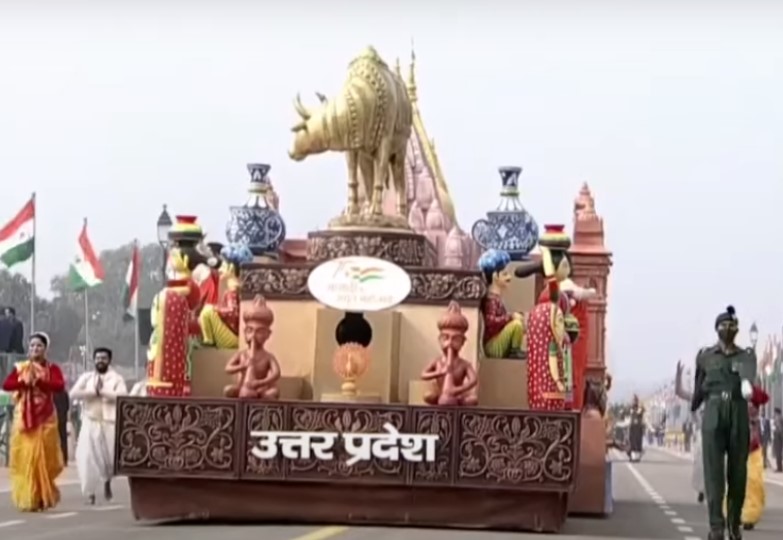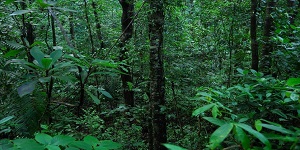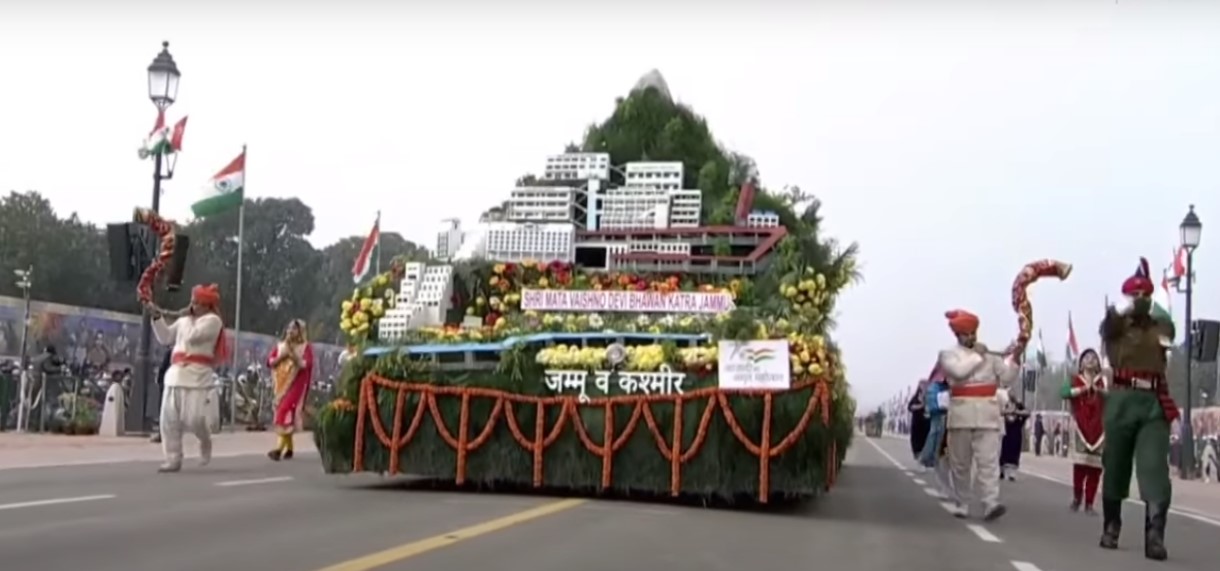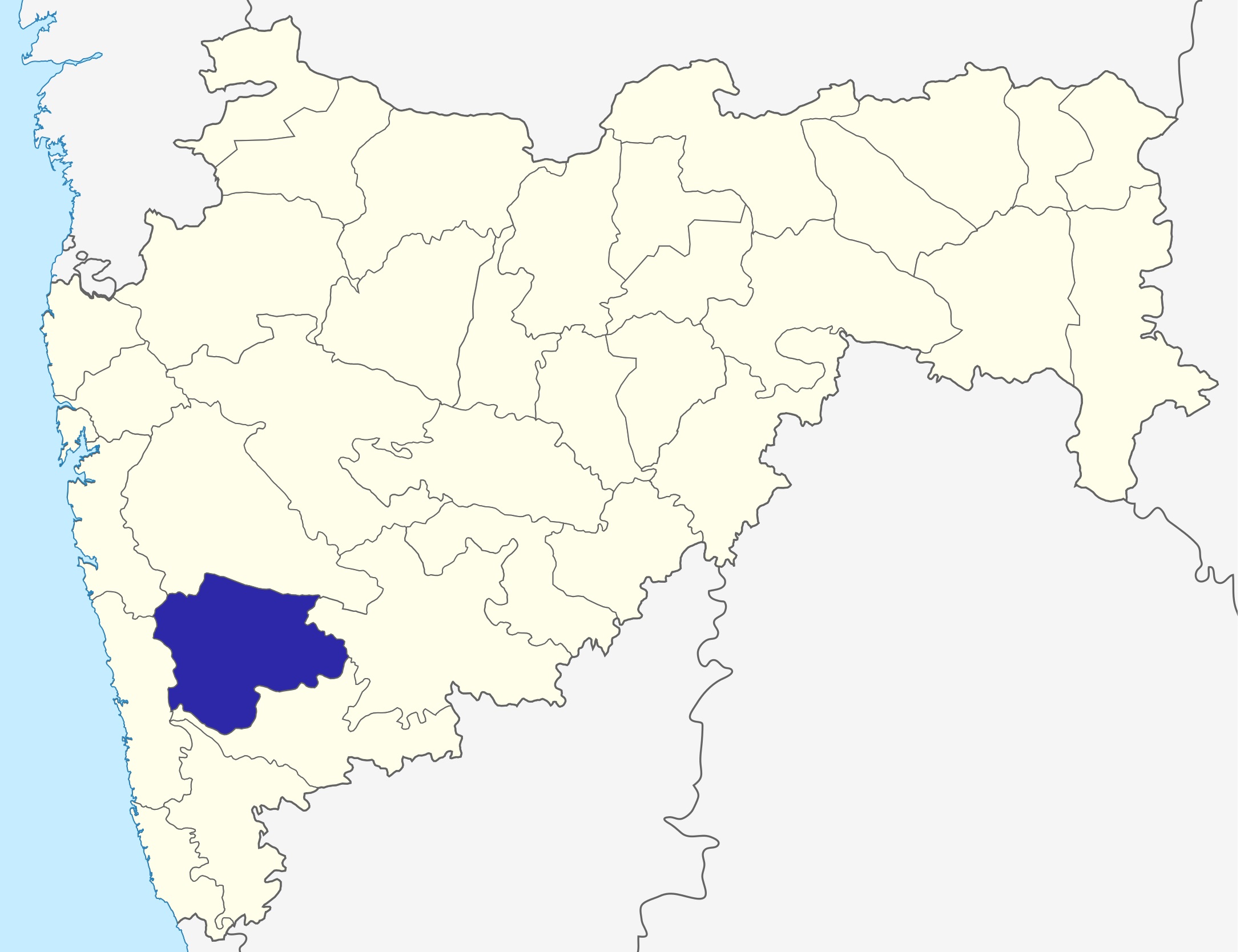1. Arunachal Pradesh: "Anglo-abor (adi) warfare" was the theme of the Arunachal Pradesh tableau. Arunachal Pradesh is the easternmost region of our country and it is home to various indigenous tribal peoples. When the British attempted to establish authority over Adi country, the Adi people (Abors) reacted in a series of four military operations. The front section of the tableau depicted one Abor (adi) warrior leading the charge and two Abor (Adi) warriors guarding the territory against attackers. The back half of the tableau depicted scenes during the Anglo-Abor War, which lasted from 1858 to 1912.
2. Meghalaya: The Meghalayan tableau paid a tribute to the cooperative societies and self-help groups led by women which collectively contributed to the State’s economy. The front portion of the tableau had bamboo and cane handicrafts which signify the popularity of these products and the undeniable contribution of the cooperative societies that were mostly led by women.
3. Gujarat: Gujarat’s tableau focused on the significance and life of tribal revolutionaries of the State who contributed their part in the freedom movement of 1922. The front portion focused upon the spirits of the freedom fighters’ ancestors who gave their all for the efforts related to tribal upliftment. The true incident of the horrific massacre when the British soldiers charged up against the tribals in Jaramara Hills was depicted in the tableau.
4. Uttarakhand: The state of Uttarakhand focused on the connectivity developments that are being carried out in the State along with the famous religious sites in their particular tableau. The front part of the tableau showcased the Hemkunt Sahib Gurudwara and the rear portion displayed the Dobra-Chanti Bridge. It is a 440-meter newly constructed suspension bridge that connects the district quarters of Tehri Garhwal with Pratap Nagar.
5. Haryana: The huge success of Haryana’s athletes at the Tokyo Olympics provoked the State to choose the same theme for its tableau. Haryana earned four of India's seven medals in the Tokyo Olympics 2020. Moreover, Haryana's athletes earned six of the country's 19 medals in the Paralympics 2020.
6. Uttar Pradesh: This year's Uttar Pradesh Republic Day tableau chronicled the magnificent history and achievements of the Kashi Vishwanath Dham, which were made possible by skill development and employment through the ‘One District One Product (ODOP)’ program. It also highlighted the success, as demonstrated by the State Government's new micro, small, and medium enterprise policy and the Kashi Vishwanath Dham mission. The three-tiered tableau was prepared by the Uttar Pradesh Textile and Handicrafts Development Corporation on a 65 feet long, 27 feet wide truck.

7. Karnataka: Karnataka's long history of handicrafts was on prominent display, from expertly constructed pots to meticulously carved sandalwood miniatures. The tableau, which was inspired by the topic "Karnataka: The Origin of Traditional Handicrafts," featured a huge Asiatic rosewood elephant sculpted out of Mysuru rosewood, for which the State is well known. Karnataka's carpentry skills are world-famous, thanks to its expert craftsmen who have made wood arts their specialty. Such artisans are not only protecting our forests but also creating employment opportunities.

8. Jammu and Kashmir: The ‘Changing Face of Jammu & Kashmir’ was the theme for Jammu and Kashmir’s tableau for Republic Day 2022. The tableau's front portion showed the world-renowned Mata Vaishno Devi Bhawan at Katra in the Trikuta Mountains of the Jammu Division. The rear portion depicted India's Institute of Management, Indian Institute of Technology, AIIMS, and International Airport being erected. The newly built Banihal Qazigund highway tunnel underneath the Budgam hill between Srinagar-Budgam and Banihal-Ramban was also depicted. The allusion was to the Taj Corridor project which would connect New Delhi with Kashmir Valley via link roads, tunnels, rail tracks, etc.

9. Chhattisgarh: Chattisgarh’s tableau was based on ‘Gordhan Nyay Yojana’. This Yojana combines ancient knowledge and the scientific method to make use of rural resources to address a variety of global problems. On the tableau, rural women in traditional tribal costumes were seen collecting cow dung and carrying it to the collection centers in "Gauthans" for sale. They were clothed in handcrafted clothing and jewellery, and the flower pots surrounding them represented agriculture and floriculture in Gauthans. In addition, the tableau included cow dung diyas that signified women's self-dependence and self-assurance in rural areas.

10. Punjab: Punjab’s tableau, which included Bhagat Singh and Udham Singh, martyrs of the independence movement, was designed to portray the theme of martyrdom and freedom. The centerpiece of the tableau, at the very front, showed a life-size replica of Bhagat Singh raising his hand in protest against British rule, along with his companions Rajguru and Sukhdev. All three were hanged together during British rule. The center portion of the tableau depicted Lala Lajpat Rai and it also included a portrait of Udham Singh, who had avenged the Jallianwala Bagh massacre by shooting Michael O'Dwyer. The rear part of the tableau displayed the "Jang-e-Azadi Memorial" in Punjab's Kartarpur.

11. Maharashtra: The Indian giant squirrel that lives in the Sahyadri hills, a new spider species named for Mumbai police officer Tukaram Ombale who captured terrorist Ajmal Kasab during the 26/11 attack, was one of Maharashtra's bio-diversity symbols. The tableau depicted five bio-diversity symbols of the State, including the State animal 'Shekru' or Indian giant squirrel, the State bird 'Hariyal', State butterfly 'Blue Mormon,' State flower 'Jarul,' and the State tree 'Mango.' The float's main shape was based on the Kaas Plateau, a world natural heritage site in Satara district with 1,500 plant species and 450 wildflower species that is home to the world's smallest tea plucking machine. The tableau also featured a three-foot model of Sarada Superba, a large fan-throated lizard.

12. Goa: Goa’s tableau was based upon the theme of ‘Symbols of gone heritage’. The highlight of the tableau was a dance performance from the Kunbi community, Goa's original inhabitants. Glimpses from the liberation struggle and dances from the Kunbi community were also highlighted on the tableau. The magnificent Fort Aguada overlooking the Arabian Sea is considered to be Goan heritage's most recognizable symbol. The Portuguese erected the fort in 1612 to safeguard against Dutch attacks. The fort was used as a jail and prison for freedom fighters during the Goan liberation struggle before they were taken to Lisbon for longer terms. The tableau, created by Sushant Khedekar, includes a representation of the Martyrs' Memorial at Azad Maidan in Panaji.